Rare Commercials & P.S.A’s.mp3
![]()
A Motor City Radio Flashback memory: 1956
A Moment in Time: Elvis Takes Detroit In ’56
DETROIT, March 09, 2012 — Elvis Presley, “the nation’s new singing sensation,” came to Detroit for the first time on Friday, May 25, 1956. He was booked to perform “in person” live on stage at the Fox Theater for three performances for that date.
The 21-year old singing phenom was winding up his tour in the Midwest that spring, having previously stopped in St. Paul, Minn., and in Lacrosse, Wisconsin. Presley also performed at the Ellis Auditorium in Memphis Tennessee on May 15, then took a ten-day break from his tour while home before heading north to the Motor City.
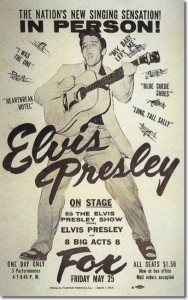
In the Lacrosse, Wisconsin performance Presley’s hip-thigh gyrations on stage compelled the editor of the local newspaper to complain to FBI Director J. Edgar Hoover, of various reports picked up that Elvis’ act consists of ‘sexual gratification on stage.’
At the Detroit concert, the general admission ticket price to see Elvis was $1.50, all seats were available at that set admission price. In the earlier two shows, a young Lee Alan, who was then the all-night deejay at WJLB, emceed the event by introducing Elvis before the Detroit Fox crowd. Robin Seymour, the popular radio personality on WKMH then, also met Elvis Presley backstage during one of the three Fox concerts.
In 2006, FTD released a book, entitled, A Moment In Time: 4 Days in ’56 on November 29 that year. It was authored by Michael Rose. Rose had assembled these May 25 Detroit photographs while capturing a glimpse of Elvis Presley’s life during 1956. A snapshot in time, many of these photographs reportedly have never been published before, according to the author.
The following evening, Saturday, May 26, Elvis was in Columbus, Ohio. Then it was off to Dayton, Ohio for two performances at the University of Dayton Fieldhouse on Sunday, May 27, before heading back home to Memphis, on Monday, May 28, 1956.
But here in Detroit in 1956, these images captured a moment in time in the lives of these Detroiters when “the nation’s new singing sensation” swept their city by storm during one memorable evening in May of 1956.
![]()
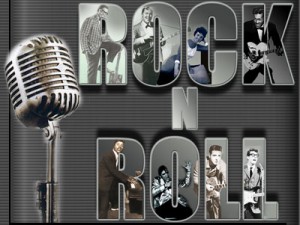 From the MCRFB music calendar:
From the MCRFB music calendar:
On this date: MARCH 9
1961: The Supremes release their first single, “I Want A Guy,” it is not a hit.
1963: The Beatles kick off in a UK tour supporting Tommy Roe and Chris Montez. By the end of the 21-date tour, the band becomes the headliner.
1970: The British blues band formerly known as Earth take the stage at
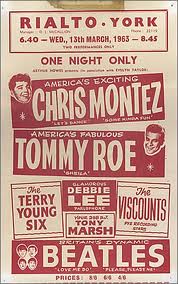
London’s Roundhouse with a heavier sound and new name — Black Sabbath.
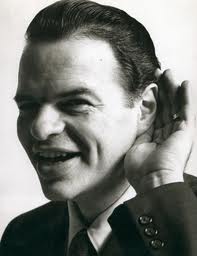 1976: For the second time, the Who’s Keith Moon collapses while performing at a show, this time at the Boston Garden. Though drug and alcohol are the culprits, Roger Daltrey tells the crowd Moon is suffering from the flu. The gig ends, but the group plays another concert for ticket-holders on April 1.
1976: For the second time, the Who’s Keith Moon collapses while performing at a show, this time at the Boston Garden. Though drug and alcohol are the culprits, Roger Daltrey tells the crowd Moon is suffering from the flu. The gig ends, but the group plays another concert for ticket-holders on April 1.
1987: The Songwriters Hall Of Fame in New York City inducts Lennon and McCartney, Goffin and King, Mann and Weil, and Sam Cooke in their initial awards ceremony for the selected inductees.
2004: Tom Jone’s manager — and son — Mark orders the 63-year old sex symbol singer to stop wearing tight leather pants onstage.
And that’s just a few of the events which took place in pop music history, on this day . . . . M A R C H 9
![]()
RCA Victor Sneaks In Rita Pavone
NEW YORK — Under wraps of secrecy, RCA Victor brought its Italian and world-wide singing star Rita Pavone into the country for clandestine recording sessions.
Miss Pavone recorded her first album and some singles in English for release later this year, when the young lady makes her official performance debut and an extensive stay in either May or September. She was assisted at the recording date by Dorio Soria, international director for RCA Victor.
The recording will include special English material for the young lady and a drive will be mounted to help push Rita Pavone’s recordings in this country. She has steadily widened her sphere of influence on the Continent, where she has sold something like three million single records and albums in a little more than a year in her native Italy. In addition, she has currently established a  breakthrough singing in German, while in Germany with the title, “Wenn Ich Ein Junge Waer” (I Wish I Were A Boy). Plans have also been implemented to push the lass into the Benelux countries and Scandinavia.
breakthrough singing in German, while in Germany with the title, “Wenn Ich Ein Junge Waer” (I Wish I Were A Boy). Plans have also been implemented to push the lass into the Benelux countries and Scandinavia.
Pavone returns to Italy this week for dates all over the European continent and will star in a musical film, which she will start filming upon her immediate return to her native country. END
 Addendum: Rita Pavone first debuted here on the WKNR playlist on May 28, 1964, when RCA released her one and only two-sided hit, “Remember Me,” along with “Just Once More” on the B-side. “Remember Me” was on the WKNR music guides for five consecutive weeks from the end of May throughout the month of June, peaking at the #7 spot on “Keener 13” on June 18, 1964, while dropping down to the #9 spot altogether from the WKNR playlist on June 25, 1964.
Addendum: Rita Pavone first debuted here on the WKNR playlist on May 28, 1964, when RCA released her one and only two-sided hit, “Remember Me,” along with “Just Once More” on the B-side. “Remember Me” was on the WKNR music guides for five consecutive weeks from the end of May throughout the month of June, peaking at the #7 spot on “Keener 13” on June 18, 1964, while dropping down to the #9 spot altogether from the WKNR playlist on June 25, 1964.
(Information and news source: Billboard magazine; January 18, 1964).
![]()
TV Disk Hops Hit In Detroit
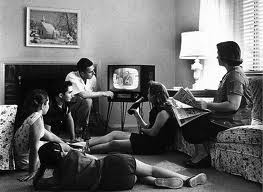
DETROIT — WJBK-TV has come up with ample evidence of current audience popularity for afternoon “bandstand” formats of programming records on TV for dancing by a live studio audience of teenagers.
The Detroit television station pulled a special ARB survey of its new “Detroit Bandstand,” emceed by Dale Young from 5:00 to 5:30 weekdays, and came up with a whopping 14.8 share in viewer ratings in the Detroit-TV market during the afternoon time period. The ratings were double its nearest competition, “Superman.”
Reacting to the ratings surprise, WJBK-TV added a Saturday segment of the “Detroit Bandstand” show at 5:00 to 6:00 p.m. The station claims that 4,000 pieces of mail came in during the show’s first week.
Hopping On The Hop Wagon
Stations in other markets have added record hops to their TV schedules, a major impetus being the success of Dick Clark’s ABC-TV network strip. As recently as WJBK-TV in Detroit, now KBTV, Denver, has taken the logical step of programming its new “Denver Bandstand” in and around Dick Clark’s show, so the teenagers will be dancing to local disks for 30 minutes, followed by Clark, returning to the local show for one hour. Up until now, stations have been programming directly opposite Clark or as far away from him on the clock as possible. END.
(Information and news source, Billboard Magazine; April 14, 1958).
![]()